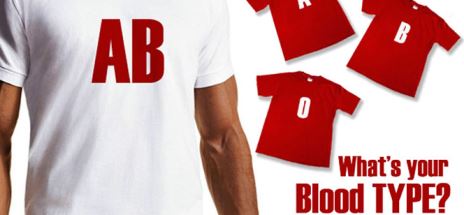THE MYSTERY OF BLOOD TYPES

Anyone who has studied high school biology by now knows that human blood is classified into four ‘types’: A, B, AB and O. In addition, each type has a positive and a negative sign attached to it that is a representation of whether or not it has an RH factor associated with it.
The discovery of blood types happened quite recently in human medical history, in 1900 by an Austrian physician called Karl Landsteiner, for which he was awarded the Nobel Prize in 1930. Landsteiner asked a simple question that physicians of previous generations never bothered to ask. Why do certain combinations of blood form clumps whereas others give rise to a clear fluid?
Until then, the business of transfusion had been very hit-and-miss. In the 1600s, a French doctor injected a man with a calf’s blood, only for the patient to sweat, vomit, produce urine the colour of chimney soot, and die. These early experiments gave transfusions a bad name, and only a few doctors dared to venture near it over the next hundred years or so.
In 1817, a British physician called James Blundell, after witnessing yet another death of a pregnant mother due to excessive bleeding, decided to take up transfusion again. This time he started off with the hypothesis that animal blood should not be injected into humans, and that only human beings should donate blood to other human beings.
In his experiments he set up an apparatus that performed the transfusion, but his first patient died. In a total of ten transfusions, only four patients survived.
In 1900, Karl Landsteiner came along and asked a question about the clumps, which had been noticed before but had been brushed away as a pathological condition not worth investigating. When he set up his experiments, Landsteiner discovered that not all human blood was created the same. Some of it mixed well with others. Others formed clumps.
So Landsteiner made copious records and identified three blood groups: A, B and C. In a few years, the ‘C’ group would be renamed ‘O’, and a new group ‘AB’ would be added to the list. A few more years later, the RH factor would be discovered, and each group would be assigned a positive or a negative sign.
But the real mystery is this: Why do we have blood groups? There must be some biological advantage for our blood to be classifying itself this way, but scientists are yet to figure out what it is. There has been a discovery of a ‘clear’ blood group among a handful of patients in Mumbai who don’t have any blood group. But they’re healthy individuals. So clearly, not having a blood group doesn’t affect us adversely.
Then why do they exist?
For now, the answer is ‘we don’t know’. But scientists believe that finding the answer could unlock another door in the labyrinth that is the human body.







